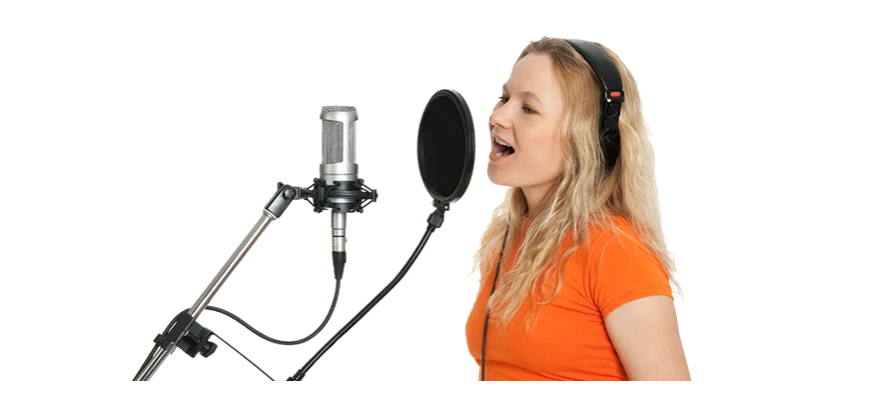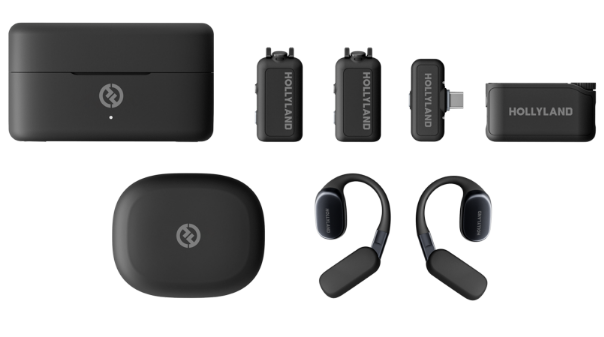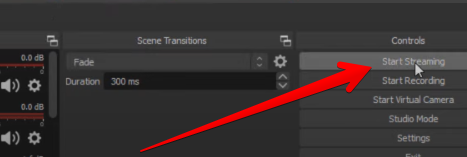Are you looking to capture the deep grooves and soul-stirring vibrations of your bass guitar? With the right microphone, you can transform your riff into a recording that reverberates with unparalleled clarity and depth. However, not all mics are created equal when it comes to picking up the unique frequencies of a bass guitar. In this review, we’ll dive into the world of audio excellence, selecting the best microphones specifically tailored for recording the rich, low-end tones of your bass. Whether you’re a seasoned pro or making your first foray into recording, our lineup will help you hit the right note every time.
When selecting the best microphone for recording bass guitar, it’s important to consider the following criteria:
- Frequency Response: Look for a microphone with a frequency response range that captures low-end frequencies (typically between 20 Hz to 20 kHz) well, as bass guitars operate within lower frequency ranges.
- Polar Pattern: Choose a mic with a directional polar pattern, such as cardioid, that focuses on sound from the front, minimizing room noise and feedback. For capturing the ambience, a figure-8 or omnidirectional pattern could be a better choice.
- Diaphragm Size: Microphones with a larger diaphragm are generally more sensitive to lower frequencies and can capture the fullness of a bass guitar.
- Durability: The microphone should be robust enough to handle high sound pressure levels (SPL) without distorting, which is essential for recording loud instruments like a bass guitar.
- Versatility: Consider if the microphone can be used for other instruments or recording situations, which could make it a more valuable addition to your gear.
- Price: Evaluate whether the microphone provides good quality relative to its cost, meeting your budget while still fulfilling the technical requirements.
Now that you know what to look for, here is a list of the best microphones for recording bass guitar, keeping these key points in mind.
| Microphone Model | Price (approx.) | Type | Frequency Response | Polar Pattern | Sensitivity | Impedance | Maximum SPL |
|---|---|---|---|---|---|---|---|
| Shure Beta 52A | $180 – $200 | Dynamic | 20Hz to 10kHz | Supercardioid | High | 150 ohms | >174 dB |
| AKG D112 MkII | $180 – $200 | Dynamic | 20Hz to 17kHz | Cardioid | High | 210 ohms | 160 dB SPL |
| Audix D6 | $200 – $220 | Dynamic | 30Hz to 15kHz | Cardioid | High | 200 ohms | 144 dB SPL |
| Sennheiser MD 421-II | $380 – $400 | Dynamic | 30Hz to 17kHz | Cardioid | High | 200 ohms | >150 dB |
| Electro-Voice RE20 | $450 – $500 | Dynamic | 45Hz to 18kHz | Cardioid | High | 150 ohms | >146 dB SPL |
Notes:
- The prices listed are rough estimates and may vary widely based on factors like geography, retailer, and ongoing promotions.
- The term ‘High’ under sensitivity is relative and indicates that these microphones are sensitive enough for their intended use but their exact sensitivity values (measured in mV/Pa) should be checked in the product specifications for precise comparison.
- Maximum SPL is indicated in decibels (dB) and where specifics are not provided, the symbol ‘>’ is used to indicate the microphone can handle high sound pressure levels that are adequate for bass guitar recording.
Make sure to check for the latest information and user reviews as they can give real-world feedback on how each microphone performs, especially for recording bass guitar.
Shure Beta 52A
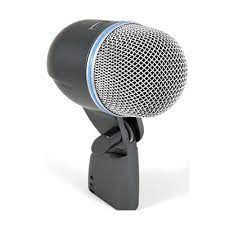
Overview
The Shure Beta 52A stands out as a microphone specifically engineered to capture the robust low-end frequencies of bass guitars and kick drums with precision. Its tailored frequency response and cardioid polar pattern make it adept at isolating the sound source while dismissing unnecessary noise. I’ve found it to possess a solid build that’s ideal for both studio and live performance settings.
Upon recording with the Beta 52A, the output consistently impresses with its clarity and punch. The low frequencies are rendered with a richness and depth that do justice to the natural sound of a bass guitar. This mic has an inherent ability to handle high sound pressure levels without distortion, which is particularly advantageous when miking loud bass amps.
Specs
- Type: Dynamic (moving coil)
- Frequency Response: 20Hz to 10kHz
- Polar Pattern: Supercardioid
- Output Impedance: 150 ohms
- Sensitivity: -64 dBV/Pa (0.6 mV)
Pros:
- Exceptional at capturing low-end frequencies with a high degree of integrity.
- Built like a tank, it can withstand the rigors of touring and repeated use.
- Works straight out of the box without the need for extensive EQ adjustments.
- The supercardioid pattern that it employs effectively reduces stage bleed and feedback.
Cons:
- The pronounced presence boost might require some tweaking during mixing, depending on the context.
- Its focused pickup pattern demands precise placement to ensure optimal sound capture.
Price
The price for the Shure Beta 52A hovers around $189, which I find to be a sensible investment given its performance and durability. You’re not just paying for a microphone but for a reliable tool that will consistently deliver during sessions and gigs alike.
In my opinion, the Shure Beta 52A is a no-brainer for any bass guitarist or engineer looking to invest in a microphone that captures the essence of their instrument. It’s a mainstay in my recording arsenal, and for a good reason – it just works, and works well, every single time.
AKG D112 MkII
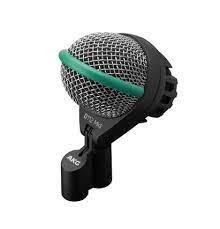
Overview:
When it comes to recording the depth and power of a bass guitar, the AKG D112 MkII is quite the standout. A successor to the venerable D112, this microphone is tailored for low-frequency instruments, making it a favored choice among producers and sound engineers. The AKG D112 MkII retains the original’s punch and clarity but improves on its already impressive ability to handle high SPLs (sound pressure levels), which means it’s particularly hardy when placed in front of a thundering bass amp.
In my experience, this microphone has a way of capturing the essence of the bass with a fidelity that respects the instrument’s natural tone. It doesn’t color the sound too much, which can be a problem with lesser mics that either overemphasize the boominess or lose the details in the low end. Instead, the D112 MkII provides a balanced representation that’s both warm and precise.
Specs:
- Type: Dynamic
- Polar Pattern: Cardioid
- Frequency Response: 20 Hz – 17 kHz
- Max SPL: 160 dB
- Sensitivity: 1.8 mV/Pa
- Impedance: 210 ohms
Pros:
- Exceptional at handling high SPLs without distortion, providing a clean capture of your bass’s sound.
- The pronounced bass resonance volume chamber enhances the low-frequency performance, crucial for a bass guitar.
- Its cardioid pattern effectively rejects off-axis noise, focusing solely on the sound directly in front of it.
- The mic is built like a tank, suggesting it can take a good few knocks in a studio or live setting without a hiccup.
Cons:
- Some may find it lacks a little character when compared to more boutique microphones, which isn’t necessarily a bad thing but worth noting if you’re looking for a very specific sound.
- The mid-range might come through as slightly scooped, which requires a bit of EQ finessing if you’re after a mid-focused tone.
Price:
While microphone prices can vary depending on where you shop, as of my latest check, you can expect to pay somewhere in the range of $200 to $250 for the AKG D112 MkII. Considering its reliability and performance, it’s a reasonable investment for anyone serious about recording bass.
In conclusion, the AKG D112 MkII isn’t just a safe bet; it’s a smart one for anyone looking to capture the powerful surge of a bass guitar without fuss or muss. Its blend of durability, performance, and price makes it a top contender and a staple in the recording industry for good reason.
Audix D6

Overview:
The Audix D6 is a dynamic microphone that is a favorite among sound engineers and producers when it comes to capturing the true essence of a bass guitar. My personal experiences with the D6 have often revolved around its exceptional ability to handle low frequencies with accuracy and punch. The mic boasts a cardioid pickup pattern which strategically isolates the sound of your instrument and minimizes background noise. Its compact design also means positioning it near your bass amp or directly inside a kick drum (if you ever need to double up for drum recording) is a breeze. Further, there’s a certain warmth and ’roundness’ to the sound it captures that often means less tweaking during the mix, saving precious time and effort.
Specs:
- Transducer Type: Dynamic
- Frequency Response: 30Hz – 15kHz
- Polar Pattern: Cardioid
- Impedance: 200 ohms
- Connector: XLR
Pros:
- The Audix D6 delivers deep lows and solid punch, which makes it perfect for recording bass guitars that need to stand out.
- Its cardioid pattern effectively rejects off-axis sounds, ensuring a clean recording.
- The robust build quality guarantees durability in both studio and live settings.
- Easy to position due to its compact size and does not typically require extensive EQ adjustments post recording.
Cons:
- The D6 has a very distinctive sound coloration, so if you are looking for a flat, natural sound, this might not be the ideal mic for you.
- It can be less versatile for uses beyond bass frequencies or instruments that occupy the lower end of the frequency spectrum.
Price:
The Audix D6 sits at a mid-range price point, often found roughly around $200. Considering its durable construction and specialized bass capturing capabilities, I find this to be a fair price for those who value a punchy, clear low end in their recordings.
The way the D6 aids in delivering a mix-ready bass tone is exceptional, and for any sound engineer or home recording enthusiast who is looking to bring their bass guitar to life, this microphone will not disappoint. Its accentuation on the low frequencies can sometimes overshadow subtle nuances, but for most contemporary genres, this characteristic enhances the overall mix. If your work revolves around bass-heavy productions, investing in an Audix D6 is a decision you are unlikely to regret.
Sennheiser MD 421-II

The Sennheiser MD 421-II is an iconic microphone, well-known among sound engineers for its versatility and performance when dealing with instruments producing deep and powerful sounds, such as the bass guitar.
Overview
The MD 421-II holds a legendary status for a reason. In my experience, the dynamic nature of the microphone translates to robust and adaptable recording capabilities. It’s something about the MD 421-II that refuses to let go of that warm and clear low-end we all covet in a good bass recording. Coupled with its effective rejection of feedback and excellent sound isolation, it’s a powerhouse for capturing the true essence of a bass guitar. The microphone’s full-bodied cardioid pattern preserves the main signals while minimizing background noise — a feature that truly shines in a crowded mix.
Specs
- Microphone Type: Dynamic
- Polar Pattern: Cardioid
- Frequency Response: 30Hz-17kHz
- Impedance: 200 ohms
- Connector: XLR
Pros:
- Exceptional sound quality, especially for bass frequencies.
- Durable and rugged design; it feels like it’s built to last a lifetime.
- Handles high sound pressure levels with grace, allowing for close mic’ing without distortion.
- The five-position bass roll-off switch gives invaluable tone-shaping flexibility.
Cons:
- Its size and weight might make positioning a bit challenging in tight spaces.
- The locking mechanism for the stand mount can be finicky; not as robust as the rest of the design.
- The price tag is hefty; it’s an investment for serious musicians and engineers.
Price
The Sennheiser MD 421-II comes with a price that reflects its professional reputation, typically found in the realm of $400. While certainly not pocket change, for those serious about their sound, it’s a purchase that won’t disappoint.
The MD 421-II is no impulse buy, but when used to its fullest, it has the potential to elevate bass recordings from good to great. You’re not just buying a microphone; you’re investing in a piece of gear that has stood the test of time in recording studios worldwide.
Electro-Voice RE20

Overview
The Electro-Voice RE20 is a classic piece of recording equipment revered for its versatility and consistent performance. From radio stations to recording studios, it has a legacy of being a go-to microphone for capturing deep and nuanced sounds. For recording bass guitar, the RE20 stands out with its ability to handle high-pressure levels and its almost flat frequency response, which means that it captures the true sound of your bass guitar without adding coloration or distortion.
When I got my hands on the RE20, I was immediately struck by its solid construction, which screamed durability. While using it to mic a bass guitar amp, the cardioid pattern did an excellent job of rejecting off-axis sound, ensuring that what I captured was just the pure, punchy bass without the room noise. One feature that I found to be particularly impactful was the Variable-D design, which minimizes the proximity effect. This allows recording up close to the amp without overemphasizing the bass frequencies, keeping the sound natural and well-balanced.
Specs
The technical specifications are indeed impressive, but it’s the real-world application that has wooed me. The frequency response ranges from 45 Hz to 18 kHz, which is more than adequate to capture the full scope of a bass guitar. The humbucking coil is another unsung hero, combatting electromagnetically induced noise that can often plague recording sessions.
Pros:
- Exceptional clarity for bass frequencies without unwanted coloration.
- Variable-D technology to control proximity effect.
- Sturdy build that’s built to last.
- Effective at isolating the sound source due to its cardioid pattern.
Cons:
- It’s on the heavier side, which could pose a challenge for some mic stands or placements.
- The lack of additional polar patterns or switches might be limiting for those seeking more versatility.
Price
In terms of price, the RE20 is definitely an investment, but it’s justified given its performance and longevity. You’re paying not only for a microphone but also for a piece of tried-and-true studio equipment that has withstood the test of time.
The Electro-Voice RE20 strikes an excellent balance between functionality and sound quality for bass guitar recording. It’s a safe and sound investment for any musician or engineer looking to capture the true essence of a bass guitar.
Conclusion:
Choosing the ideal microphone for recording bass guitar is crucial for capturing the depth and richness of the instrument’s sound. Our listicle has provided you with options that cater to diverse needs and budgets, each promising clarity and fidelity. Whether you go for a dynamic workhorse, a nuanced ribbon, or a precise condenser microphone, remember to consider your specific recording environment and the character of your bass tone. Arm yourself with the right mic, and the unique voice of your bass guitar will resonate through your recordings.
While traditional microphones excel at recording a bass guitar amp, capturing flexible and dynamic content often calls for a portable, high-quality wireless mic setup. A wireless lavalier microphone can be your ideal companion, especially if you want to move freely without compromising sound clarity during recordings or demonstrations.
FAQs:
- Can I use a vocal microphone to record bass guitar?
Yes, you can use a vocal microphone for recording bass guitar, but the results may vary as vocal mics are typically tailored to capture the human voice frequency range. For optimal results, it’s recommended to use a mic designed for lower frequencies produced by a bass guitar. - Do I need a preamp when recording bass guitar with a microphone?
While not always necessary, a quality preamp can significantly enhance the recorded signal’s quality, providing additional warmth and clarity to your bass guitar’s tone. - How important is the position of the microphone when recording a bass guitar?
Mic positioning is critical as it influences the captured sound’s character. Experiment with different placements to find the sweet spot that delivers the best representation of your bass’s tone, balancing between capturing the low-end frequencies and the instrument’s natural tone.

































.png)



